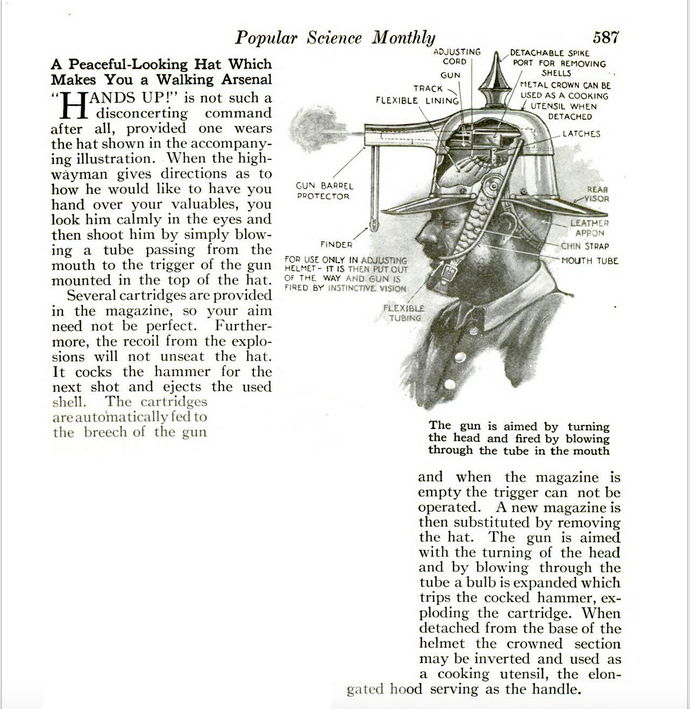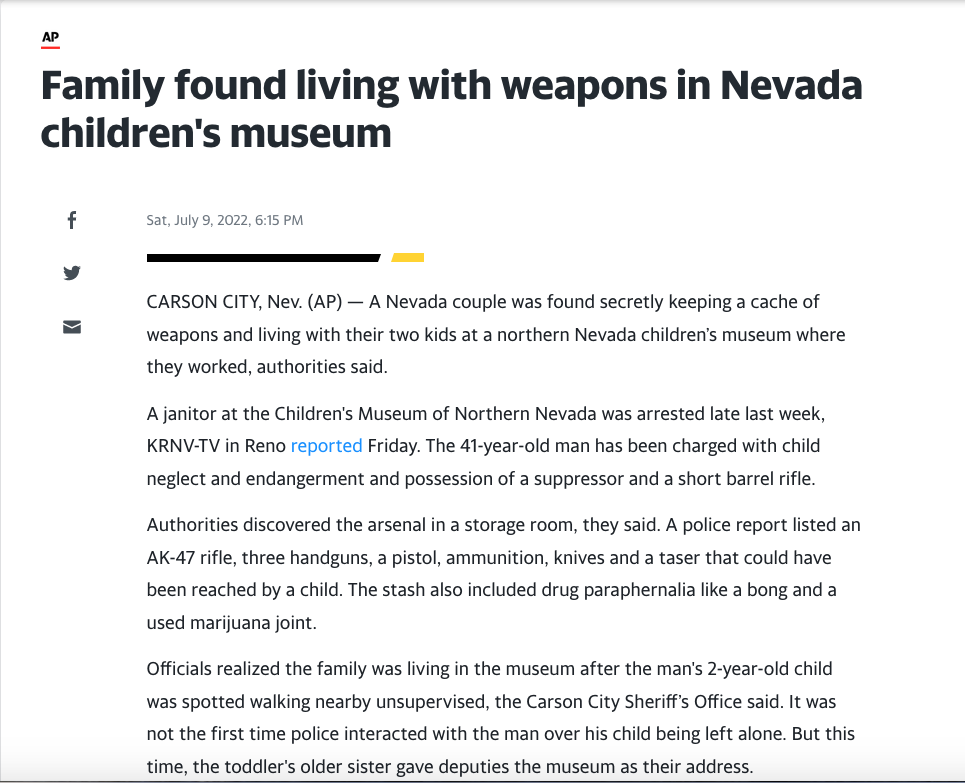Weapons
Plant Machete
A machete-wielding plant. From the website of David Bowen, its creator:The Day of the Triffids would have been a gorier novel if the plants had machetes.

via WhatTheyTh!nk
Posted By: Alex - Mon Feb 13, 2023 -
Comments (4)
Category: Art, Botany, Weapons
Glock Stallions
Glock is well-known as a gun manufacturer. What's less well known is that they also sell horse semen. link: Glock Stallions
Posted By: Alex - Fri Dec 09, 2022 -
Comments (7)
Category: Animals, Weapons
Breakaway Stethoscope
Joshua Allen Stivers of Puyallup, WA recently received a patent for a "breakaway stethoscope." It works like a normal stethoscope, but breaks apart if someone tries to use it as a garrote to strangle a person:
A quick google search reveals that stethoscopes become weapons disturbingly often. So it's kind of surprising that breakaway ones aren't already standard issue.

Derby Evening Telegraph - Aug 9, 1948
via Jeff Steck
Posted By: Alex - Thu Nov 17, 2022 -
Comments (3)
Category: Crime, Medicine, Patents, Weapons
The Hat Gun
Source.See also our recent LIPSTICK-, PURSE- AND SHOE-GUNS.

Posted By: Paul - Mon Oct 17, 2022 -
Comments (2)
Category: Headgear, 1910s, Weapons
Stealing a Dinner
Posted By: Paul - Sat Oct 15, 2022 -
Comments (2)
Category: Death, Food, Cats, Dogs, 1900s, Weapons
Follies of the Madmen #541

Posted By: Paul - Tue Sep 06, 2022 -
Comments (1)
Category: Advertising, Women, Weapons, Motorcycles
Bulletproof Ointment
1915: Inventor Percy Terry of Los Angeles believed that he had perfected an ointment that would toughen the skin so much that it would become bulletproof. He envisioned "an army of bulletproof men who could advance with immunity against anything less than cannon."He decided to test the ointment on himself. After rubbing it into his skin for several weeks, he shot himself in the face. Turned out, he wasn't bulletproof. He died at the County Hospital.

Los Angeles Times - Aug 30, 1915
Posted By: Alex - Sat Aug 20, 2022 -
Comments (5)
Category: Death, Experiments, 1910s, Weapons
Shooting Paintings
1961: Artist Niki de Saint-Phalle attached bags of paint to her paintings and then shot at them with a .22 caliber rifle, causing the bags to burst and the paint to ooze down the canvas. She called these her "shooting paintings."She explained:


Louisville Courier-Journal - July 16, 1961
Posted By: Alex - Wed Aug 17, 2022 -
Comments (0)
Category: Art, 1960s, Weapons
Mystery Illustration 108
What's extra-special about this submarine?The answer is here.
Or after the jump.

More in extended >>
Posted By: Paul - Mon Jul 18, 2022 -
Comments (2)
Category: Oceans and Maritime Pursuits, Technology, 1950s, Weapons
Unauthorized Dwellings Twenty-Four
Full story here.
Posted By: Paul - Tue Jul 12, 2022 -
Comments (0)
Category: Family, Museums, Unauthorized Dwellings, Weapons

| Who We Are |
|---|
| Alex Boese Alex is the creator and curator of the Museum of Hoaxes. He's also the author of various weird, non-fiction, science-themed books such as Elephants on Acid and Psychedelic Apes. Paul Di Filippo Paul has been paid to put weird ideas into fictional form for over thirty years, in his career as a noted science fiction writer. He has recently begun blogging on many curious topics with three fellow writers at The Inferior 4+1. Contact Us |




